In einer Welt, in der alles aufgeladen werden muss – Telefone, Ohrhörer, sogar Zahnbürsten – ist die Smartwatch oft der größte Übeltäter. Viele Nutzer lieben, was Smartwatches bieten, hassen aber, was sie verlangen: ständiges Aufladen.
Deshalb sind Hybrid-Smartwatches zu einer erfrischenden Alternative geworden. Sie verbinden das Aussehen einer traditionellen Uhr mit der Intelligenz moderner Technik und bieten dabei einen großen Vorteil: eine Batterielaufzeit, die in Wochen und nicht in Tagen gemessen wird.
Wenn Sie es leid sind, Ihre Uhr jede Nacht anzuschließen, hilft Ihnen dieser Leitfaden zu verstehen, worauf Sie achten sollten und welche Modelle wirklich eine Ausdauer bieten, auf die Sie sich verlassen können.
Verstehen von Hybrid-Smartwatches und ihrer Batterielaufzeit
Hybrid-Smartwatches sitzen zwischen zwei Welten: analoger Eleganz und digitaler Intelligenz. Im Gegensatz zu Touchscreen-Smartwatches, die alles anzeigen und schnell Energie verbrauchen – nutzen Hybride analoge Zeiger oder minimalistische Displays, um wichtige Daten wie Schritte, Herzfrequenz oder Benachrichtigungen zu liefern und dabei die Batterie zu schonen.
Warum ist das wichtig?
Weil jeder Smartwatch-Nutzer irgendwann an dieselbe Grenze stößt: der Tag, an dem er vergisst, sie aufzuladen und feststellt, dass es nur noch ein toter Bildschirm am Handgelenk ist.Hybrid-Smartwatches lösen dieses Problem, indem sie sich auf Funktion statt auf Show konzentrieren. Sie bieten weiterhin Aktivitätsverfolgung, Gesundheitsüberwachung und Benachrichtigungen – nur ohne die ständige Angst vor leerem Akku.
Eine gute Hybrid-Smartwatch sollte sich zuverlässig, wartungsarm und beständig anfühlen – nicht wie ein weiteres Gerät, das tägliche Pflege benötigt.
Wie man die Batterielaufzeit einer Hybrid-Smartwatch bewertet
Die Wahl einer Hybrid-Smartwatch mit starker Ausdauer bedeutet nicht nur, die größte Zahl auf der Verpackung zu finden. Die Angaben „bis zu 30 Tage“ spiegeln oft perfekte Laborbedingungen wider, die nicht dem tatsächlichen Gebrauch entsprechen.
Um eine realistische Einschätzung zu treffen, ist es wichtig, die Faktoren zu verstehen, die die Leistung wirklich beeinflussen – von der Batterietyp bis zu den Nutzungsgewohnheiten.
Batterietyp und Kapazität
Die meisten Hybrid-Smartwatches verwenden kompakte, hocheffiziente Batterien, die viel länger halten als herkömmliche Smartwatches. Die zwei Haupttypen sind:
- Wiederaufladbare Lithium-basierte Batterien:Diese Batterien können hunderte Ladezyklen bewältigen und werden in den meisten modernen Hybrid-Uhren verwendet. Sie unterstützen schnelles Laden und gleichmäßige Leistung, was sie für Nutzer geeignet macht, die smarte Funktionen regelmäßig nutzen.
- Austauschbare Knopfzellenbatterien: Einige einfachere Hybrid-Uhren verwenden Knopfzellenbatterien, die mehrere Monate oder sogar ein Jahr halten können, bevor sie ersetzt werden müssen. Diese sind zwar praktisch, werden aber meist mit minimalen Funktionen und begrenzter Sensor-Nutzung kombiniert.
Die Batteriekapazität allein, gemessen in Milliamperestunden, erzählt nicht die ganze Geschichte. Ein kleineres, gut optimiertes System kann ein größeres übertreffen, wenn die Firmware die Energieverteilung effizient steuert. Wahre Ausdauer hängt ebenso von Energiemanagement wie von der Batteriekapazität ab.
Display-Technologie
Das Display ist typischerweise der energieintensivste Teil jeder Smartwatch. Hybrid-Uhren sparen Energie, indem sie weniger anspruchsvolle Displaysysteme verwenden. Häufige Typen sind:
- Analoge Zeiger mit Unterdisplays: Mechanische Zeiger verbrauchen sehr wenig Energie, was einen langen Betrieb selbst bei laufenden Basis-Smartfunktionen ermöglicht.
- E-Ink- oder energiesparende LCD-Panels: Diese Displays bieten hervorragende Sichtbarkeit bei Tageslicht und verbrauchen minimal Energie, da sie selten aktualisiert werden.
- AMOLED- oder hochauflösende digitale Displays: Modern und optisch ansprechend, verbrauchen diese mehr Energie – besonders bei hoher Helligkeit oder wenn der „Always-On-Display“-Modus aktiv ist.
Bei der Bewertung des Display-Einflusses sollten Helligkeitsstufen, Bildwiederholrate und Hintergrundbeleuchtung berücksichtigt werden. Kleine Unterschiede in diesen Einstellungen können die Gesamtlaufzeit erheblich beeinflussen.
Sensor- und Funktionsnutzung
Jede Funktion, die Daten verfolgt, synchronisiert oder überträgt, verbraucht Energie. Die Hauptverursacher des Batterieverbrauchs sind:
- Kontinuierliche Herzfrequenz- oder SpO₂-Überwachung: Diese verwenden optische Sensoren, die eine konstante Stromzufuhr benötigen. Das Einstellen von Intervallen statt kontinuierlicher Überwachung kann die Laufzeit erheblich verlängern.
- GPS- oder Navigationsfunktionen: Ständige Satellitenverbindungen entladen die Batterie schnell, besonders bei Workouts oder Kartennutzung.
- Bluetooth-Konnektivität: Häufige Synchronisation mit dem Smartphone verkürzt die Laufzeit. Hybrid-Smartwatches, die manuelle oder geplante Synchronisation erlauben, sparen mehr Energie.
Die Batterielaufzeit hängt direkt davon ab, wie intensiv diese Funktionen genutzt werden.Gelegentliche Nutzung von Tracking und GPS führt zu deutlich längerer Laufzeit als kontinuierlicher Betrieb.
Softwareeffizienz und Energiemanagement
Die Batterieleistung wird auch davon bestimmt, wie gut die interne Software der Uhr Ressourcen verwaltet. Intelligente Energiemanagementsysteme können den Verbrauch reduzieren durch:
- Pausieren der Sensoren bei Inaktivität oder Ruhe.
- Automatische Anpassung der Displayhelligkeit an die Lichtverhältnisse.
- Reduzierung der Häufigkeit von Hintergrund-Datensynchronisationen.
Effiziente Firmware kann die Betriebszeit erheblich verlängern, ohne dass der Nutzer Einstellungen manuell anpassen muss. Uhren, die regelmäßige Software-Updates erhalten, behalten oft eine bessere Batterieleistung und Gesundheit über die Zeit.
Nutzergewohnheiten und Umgebung
Schließlich hängt die Batterielaufzeit stark von individuellen Gewohnheiten und äußeren Bedingungen ab. Faktoren, die die Leistung häufig beeinflussen, sind:
- Häufige Benachrichtigungen und Alarme: Jede Vibration oder Bildschirmaktivierung verbraucht Energie.
- Temperaturextreme: Sowohl hohe Hitze als auch Frost verringern die Batterieeffizienz.
- Handgelenkbewegungen und Gestensteuerung: Ständige Bewegungserkennung hält Sensoren länger aktiv.
Langfristiges Nutzerfeedback oder Ausdauertests geben ein genaueres Bild davon, was zu erwarten ist, als offizielle Marketingangaben. Eine Hybrid-Smartwatch, die im Alltag 20 Tage hält, ist viel verlässlicher als eine, die unter unrealistischen Bedingungen 45 Tage verspricht.
Balance zwischen Funktionalität und Effizienz
Die beste Hybrid-Smartwatch ist nicht unbedingt die mit der längsten theoretischen Laufzeit – sondern die, die lange genug hält und dabei alle Funktionen bietet, die Sie tatsächlich nutzen.
Eine hocheffiziente Hybrid-Uhr balanciert Batteriekapazität, Nutzung smarter Funktionen und optimierte Software. Das Ziel ist nicht nur länger zu halten – sondern intelligenter zu arbeiten, Energie zu sparen ohne Leistung oder Zuverlässigkeit zu opfern.
Top-Hybrid-Smartwatches mit langer Batterielaufzeit
Wenn Ihre größte Frustration das Aufladen der Uhr alle zwei Tage ist, sind diese Hybrid-Smartwatches für ein anderes Erlebnis gebaut – weniger Einstecken, mehr Leben. Jedes Modell erfüllt einen bestimmten Nutzerbedarf: professioneller Stil, Outdoor-Ausdauer, budgetfreundliche Power oder alltäglicher smarter Stil.
KOSPET MAGIC R10

Für diejenigen, die moderne Funktionen ohne tägliches Aufladen oder hohen Preis wollen, liefert dieses Modell.
Es gibt bis zu 12–13 Tage typische Nutzung an und im Standby-Modus bis zu 50 Tage.
Es bietet robustes Design, GPS-Unterstützung und ein voll ausgestattetes Smartwatch-Erlebnis – und hält dabei den Batterieverbrauch niedrig.
Preisbewusste Nutzer, die dennoch starke Batterielaufzeit und anständige smarte Funktionen wollen. Erfüllt das Versprechen langer Batterielaufzeit, ohne bei Funktionen oder Haltbarkeit zu stark einzuschränken.
KOSPET MAGIC P10

Für diejenigen, die eine Smartwatch suchen, die länger als ein Wochenende hält und weniger kostet als ein Flaggschiff-Smartphone, sticht die KOSPET MAGIC P10 hervor.
Sie bietet bis zu 12–13 Tage reguläre Nutzung und beeindruckende 50 Tage Standby, kombiniert Ausdauer mit Alltagstauglichkeit.
Ein robustes, wasserfestes Gehäuse, Dual-Frequenz-GPS und ein lebendiges AMOLED-Display machen sie für Outdoor-Workouts geeignet und dennoch effizient für den täglichen Gebrauch.
Ideal für Nutzer, die Wert auf Batterielanglebigkeit statt übermäßigen Schnickschnack legen. Die MAGIC P10 zeigt, dass man zuverlässige smarte Funktionen, robustes Design und lange Batterielaufzeit bekommen kann – ohne zu viel auszugeben.
Withings ScanWatch
Wenn Sie eine Smartwatch wollen, die wie ein feines Zeitmesser aussieht, aber wie ein verlässliches Werkzeug funktioniert, trifft dieses Modell ins Schwarze.
Sie bietet bis zu 30 Tage Batterielaufzeit bei normaler Nutzung.
Sie erhalten Gesundheitsmetriken wie Herzfrequenz, Schlafqualität und Sauerstoffsättigung – alles verpackt in einem minimalistischen analogen Design.
Professionelle und Minimalisten, die genaue Gesundheitsüberwachung ohne Ladeaufwand wollen. Ein ganzer Monat Nutzung ohne Aufladen bedeutet, dass sie sich leise in Ihre Routine einfügt, statt Aufmerksamkeit zu fordern.
Garmin Instinct Crossover Solar
Wenn Ihr Leben Sie fern von Steckdosen und WLAN führt, wurde diese robuste Uhr dafür gemacht.
Im Smartwatch-Modus hält sie bis zu 28 Tage; mit ausreichender Solarenergie kann sie auf 70 Tage oder mehr verlängert werden.
Entwickelt für Haltbarkeit, GPS-Funktionen und Solaraufladung, ist sie gebaut, um weiterzulaufen, wenn alles andere stoppt.
Wanderer, Entdecker und alle, die wollen, dass ihre Uhr lange Reisen durchhält, ohne an den Ladegerät denken zu müssen. Eine der wenigen Hybriden, die sich wirklich durch Sonnenlicht aufladen kann – Freiheit in tragbarer Form.
Wie Sie die Batterielaufzeit Ihrer Hybrid-Smartwatch maximieren
Hybrid-Smartwatches sind so konzipiert, dass sie länger halten als herkömmliche Smartwatches, aber wie lange sie wirklich halten, hängt von Ihrer Nutzung ab.
Mit ein paar wichtigen Anpassungen können Sie die Ausdauer Ihrer Uhr deutlich verlängern, ohne die wichtigsten Funktionen zu verlieren.
Sensor- und Tracking-Aktivität steuern
Die Sensoren, die Herzfrequenz, Stress und Schlaf überwachen, sind Hauptverbraucher von Energie.
- Wechseln Sie von kontinuierlicher Überwachung zu intervallbasierten Messungen statt ganztägiger Überwachung.
- Schalten Sie automatische Hintergrundmessungen aus, wenn sie nicht notwendig sind, z. B. während Ruhephasen.
- Nutzen Sie hochfrequentes Tracking nur bei Workouts oder bestimmten Aktivitäten.
Weniger Sensoraktivität kann leicht mehrere Tage Batterielaufzeit hinzufügen, ohne die Gesamtleistung zu beeinträchtigen.
Display- und Benachrichtigungseinstellungen optimieren
Display und Benachrichtigungen sind die häufigsten Ursachen für unnötigen Energieverlust.
- Reduzieren Sie die Bildschirmhelligkeit auf ein moderates oder adaptives Niveau, das zu Ihrer Umgebung passt.
- Verkürzen Sie die Bildschirm-Timeout-Dauer, damit er nach jedem Blick schnell ausgeht.
- Begrenzen Sie Benachrichtigungen auf das Wesentliche – ständige Alarme wecken den Bildschirm und verbrauchen den ganzen Tag Energie.
Einfache Anpassungen bei Sichtbarkeit und Benachrichtigungen machen den größten Unterschied bei der täglichen Batterieleistung.
Batteriesparmodi sinnvoll nutzen
Die meisten Hybrid-Smartwatches verfügen über Energiespar- oder Ökomodi, die Hintergrundaktivitäten reduzieren sollen.
- Aktivieren Sie den Energiesparmodus beim Reisen, Schlafen oder bei leichter Nutzung.
- Diese Modi passen automatisch Helligkeit, Sensoraktualisierungen und Konnektivität an, um den Energieverbrauch zu minimieren.
- Wechseln Sie je nach Tagesablauf zwischen Standard- und Sparmodus.
Bei konsequenter Nutzung können Batteriesparmodi die Laufzeit Ihrer Hybrid-Smartwatch von Tagen auf Wochen verlängern und so Zuverlässigkeit auch in anspruchsvollen Situationen gewährleisten.
Fazit
Hybrid-Smartwatches überbrücken die Lücke zwischen traditionellem Design und moderner Funktionalität, aber ihr größter Vorteil ist die Ausdauer.
Ob Sie eine Uhr wollen, die wochenlang läuft, sich draußen selbst auflädt oder einfach im Alltag ohne Ladegerät mithält – diese Modelle zeigen, dass lange Batterielaufzeit und smarte Leistung zusammenpassen. Die richtige Wahl hängt nicht nur von den Funktionen ab – sondern davon, wie lange Ihre Uhr mit Ihnen Schritt halten kann.
FAQs
Wie lange hält der Akku einer Hybrid-Smartwatch wirklich?
Die meisten Hybrid-Smartwatches halten je nach genutzten Funktionen 10–30 Tage. Einfachere analog-digitale Modelle können einen ganzen Monat erreichen, während solche mit hellen Displays oder kontinuierlichem Tracking meist näher an zwei Wochen liegen.
Was beeinflusst die Batterielaufzeit am meisten?
Die größten Faktoren sind Bildschirmhelligkeit, kontinuierliche Herzfrequenz- oder GPS-Überwachung und häufige Bluetooth-Synchronisation. Das Deaktivieren dieser Funktionen oder der Wechsel zu intervallbasiertem Tracking kann die Laufzeit erheblich verlängern.
Sind Hybrid-Smartwatches wegen der langen Batterielaufzeit empfehlenswert?
Ja, wenn Sie Wochenlange Ausdauer schätzen und nur grundlegende smarte Funktionen wie Benachrichtigungen und Aktivitätsverfolgung benötigen. Sie verzichten auf vollen App-Zugang und Touchscreen-Funktionen, bieten aber deutlich längere Laufzeiten zwischen den Ladevorgängen.


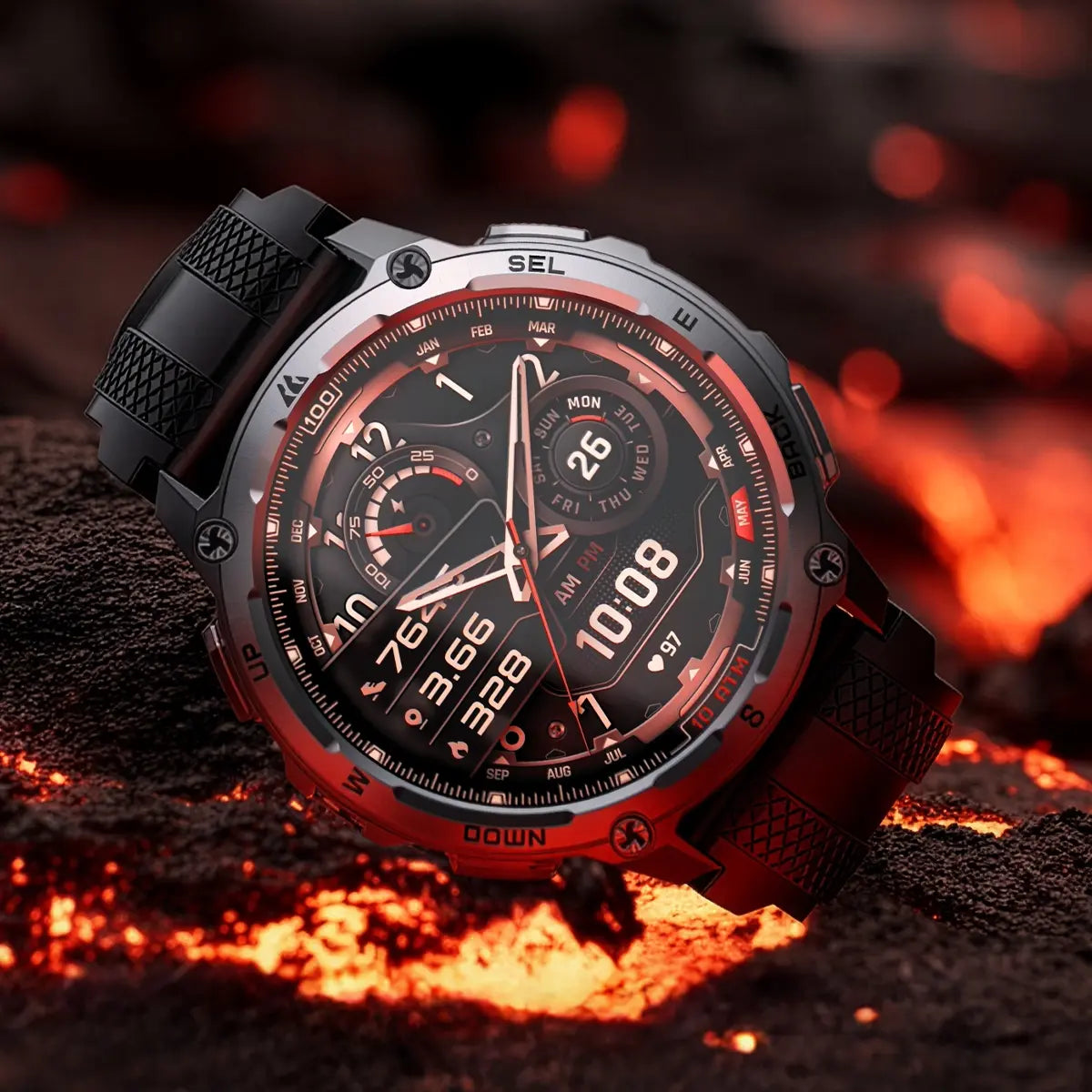

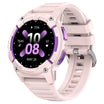
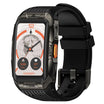
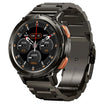
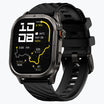
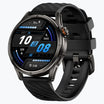
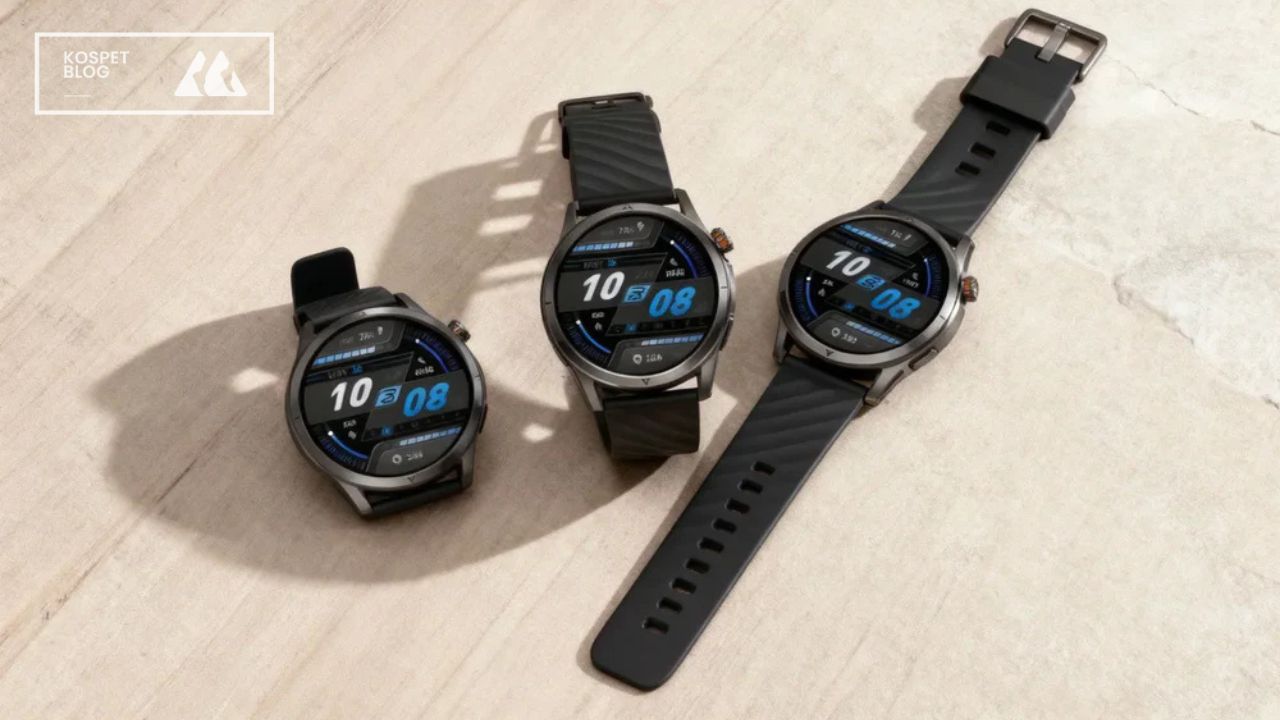






Einen Kommentar hinterlassen
Diese Website ist durch hCaptcha geschützt und es gelten die allgemeinen Geschäftsbedingungen und Datenschutzbestimmungen von hCaptcha.